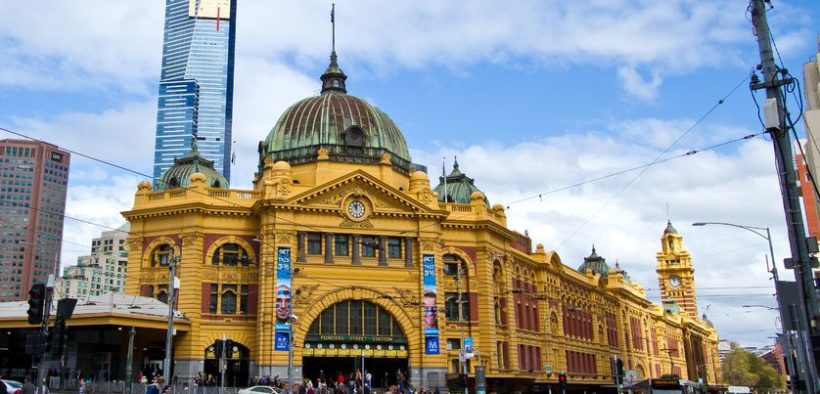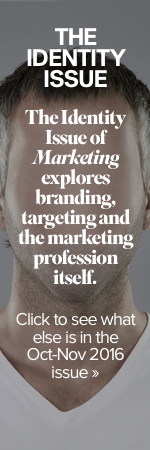Can a brand truly have a personality?
Share

Jac Phillips reveals the thought process behind Bank of Melbourne’s brand personality.
_
This article originally appeared in The Identity Issue, our October/November issue of Marketing mag.
_
 As I write this, the Economist Intelligence Unit (EIU) has just crowned Melbourne the world’s most liveable city for the sixth year running. It’s got me thinking about what makes Melbourne so good. I wasn’t born here, but I’m a proud Melburnian and an even prouder marketer with a particular interest in what defines a brand.
As I write this, the Economist Intelligence Unit (EIU) has just crowned Melbourne the world’s most liveable city for the sixth year running. It’s got me thinking about what makes Melbourne so good. I wasn’t born here, but I’m a proud Melburnian and an even prouder marketer with a particular interest in what defines a brand.
The EIU ranks the liveability of 140 cities by measuring living conditions. Its Index covers 30 factors related to stability and safety, healthcare, education, infrastructure and the environment. When I think of Melbourne, they’re not the factors that spring to mind. Yes, they’re important, but what makes Melbourne so great to me is our trams, coffee, events, design, arts, fashion, weather and footy.
That’s what makes up Melbourne’s identity, its brand. An identity is a brand’s face – it’s how you want to be perceived. It includes the obvious elements like colour, design, name, logo, symbol and tagline. Less obvious are the intangibles: how does your brand make people feel? It can be summed up with a simple equation: identity = personality.
Can a company have a personality?
When we set out to unlock the potential of the Bank of Melbourne brand, we turned to Victoria for inspiration. As the only bank focused solely on the needs of Victorians, we wanted to show that we understood the homegrown ambition, passion and grit for which Melburnians are known.
Our purpose is to create prosperity for Victorians, their businesses and local communities. Working with our creative agency, the Bank of Melbourne marketing team tapped into the spirit of the state in everything we produced. We started by recognising that Victorians are a proud lot and we apply a certain finesse to the way we make, create and do – all of it with a spirit of endeavour.
Bank of Melbourne’s brand personality had to be strong and consistent in every channel: our web and social media platforms, our branches, our contact centre, our collateral, our events, our key partnerships and especially our people.
How would you rate yours?
Does your start-up, business or organisation have a strong identity? A good way to find out is to ask a few people what they think your business stands for.
Try sending an email to a dozen stakeholders. Include a close personal friend, a couple of family members like a partner and a parent (you want more than one generation’s feedback), some existing customers and some prospects. Your email should be direct and simple. Something like, ‘I’m testing my brand’s identity. I respect your opinion, so please respond honestly. Please tell me which of the following words best describe my brand’s identity’. Use a range of different words for people to choose from, and if you’re courageous, include ‘average’, ‘irrelevant’ and others that would be a threat to your brand identity.
On personal experience, you often get more than you asked for. It may not seem like a particularly rigorous approach based on strategic or creative expertise, but it’s an effective pulsecheck on brand perception.
If you have the time and money, you can of course hire a traditional research agency to run a quantitative survey and focus groups. Or you could use social media analytics on everything that’s said about you or your brand online across the obvious social media channels as well as blogs, forums and boards. It doesn’t matter which route you take, because it’s what you do with the intelligence that makes things interesting.
The identity tools every brand needs today
Some cool brands have caught my eye in the last year, in large part because of their presence in social media, especially Instagram. Some of them existed before Instagram, but what’s interesting to me is how social media has influenced the way a brand’s personality is articulated.
Platforms like lnstagram are all about images. There are more than a billion photographs uploaded today, so a brand’s identity comes through in each video, illustration or photo. There would be very few celebrities who don’t have Instagram profiles today. Sharing their personal and professional lives has become a critical part of building a brand and fan base.
One of my favourite brands on Instagram is White Story, a relatively new Melbourne fashion label. In its own words, White Story is about purity, simplicity, authenticity and timelessness. The White Story team uploads an inspirational image every 48 hours or so. Each upload is a visual feast of something or someone who reflects the brand attributes, and also gives you a feel for White Story’s personality. White Story’s brand resonates with me, and I eagerly await the next range as well as my daily dose of its beautifully curated Instagram content.
Identity = personality, but sometimes it’s implicit
Not every brand uses social media to amplify its personality. If you’re targeting affluent females between 20 and 40, you’d be crazy not to feature content across Facebook, Instagram, Snapchat, Pinterest and Twitter – and that’s just a start. Customers aren’t online all day (even though on average, we’re spending 10 hours a day on internet-connected devices), so you need to understand your target audience’s entire media consumption habits if you want to lift awareness, consideration and ultimately acquire more customers.
One of the ways Bank of Melbourne engages with customers is through our proprietary magazine Business State. It has its own brand personality, which is aligned with our broader purpose of being the bank of first choice for Victorians.
The quarterly magazine is distributed through our branches and mailed to our business customers. Business State features a range of amazing Victorians doing their thing – most are businesspeople and all share the common purpose of contributing to our state’s prosperity. Interestingly, you won’t find our logo on the cover, but you will see a distinctive masthead, font and design. We’ve built a sub-identity that reveals our brand personality through a certain look and tone.
So if you think you know Melbourne, I’d love to hear what you think makes it the world’s most liveable city. Just to prove that my Melburnian pride doesn’t make me biased, I recently heard a great description of Sydney in comparison to Melbourne: Sydney = spectator. Melbourne = participant.
With that, I’m now pulling on my new White Story outfit to hop on a tram and have a single-origin coffee at a Collingwood gallery. Then it’s a delicious lunch at one of our internationally-renowned restaurants before heading out to Flemington to catch the start of this year’s Spring Racing Carnival. That’s what I call a day in the world’s most liveable city!
* * * * *
Purchase a subscription to Marketing and never miss an issue!
* * * * *
Image copyright: sinseeho / 123RF Stock Photo















